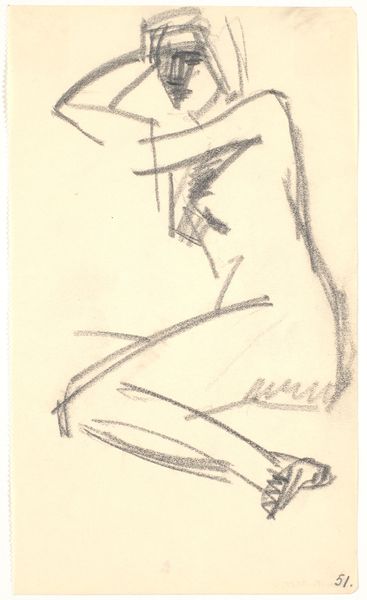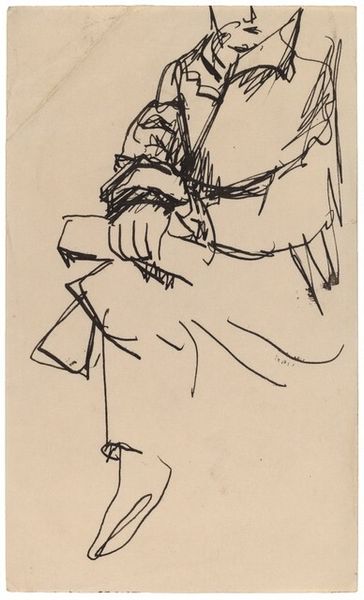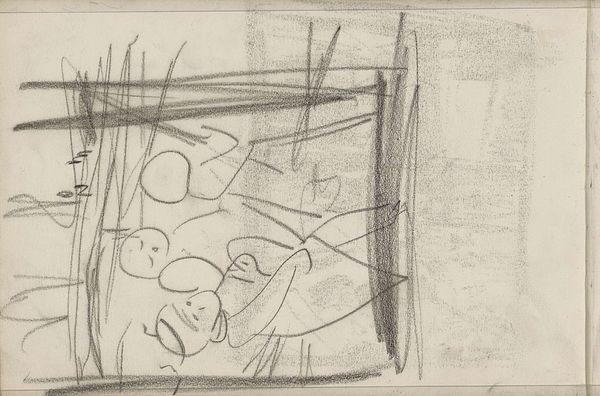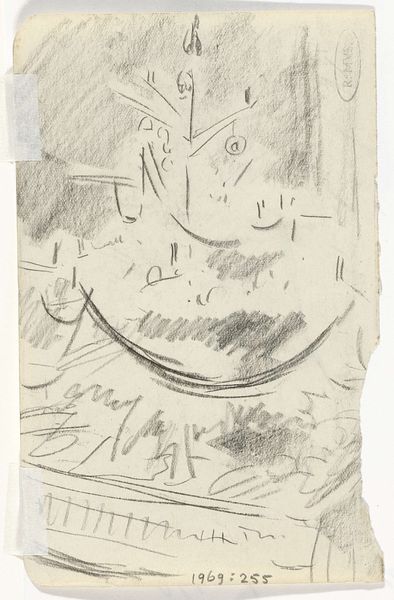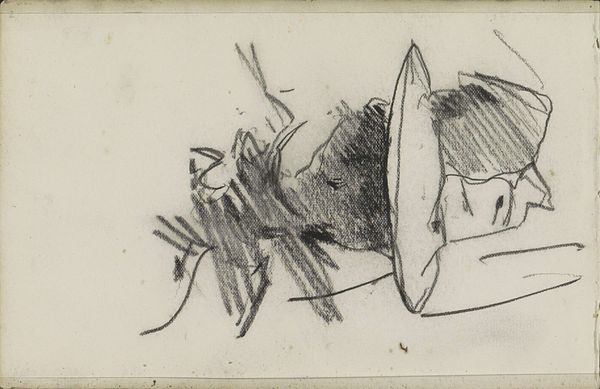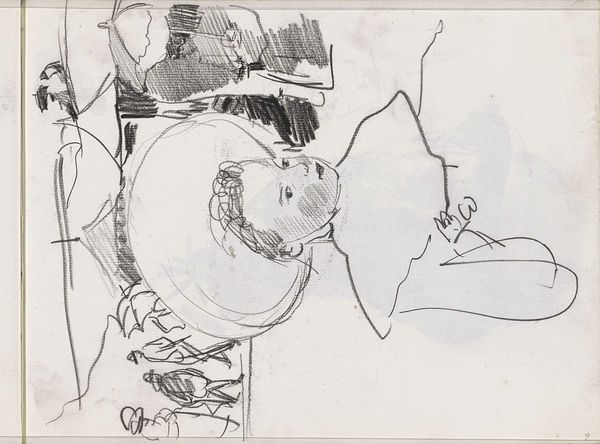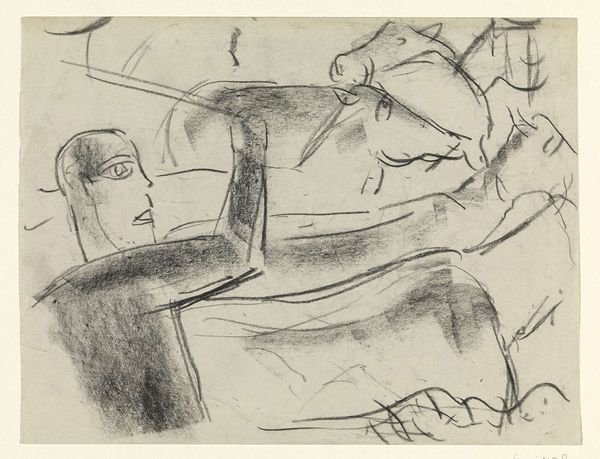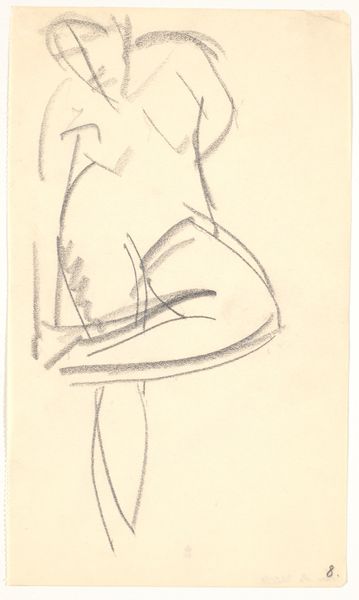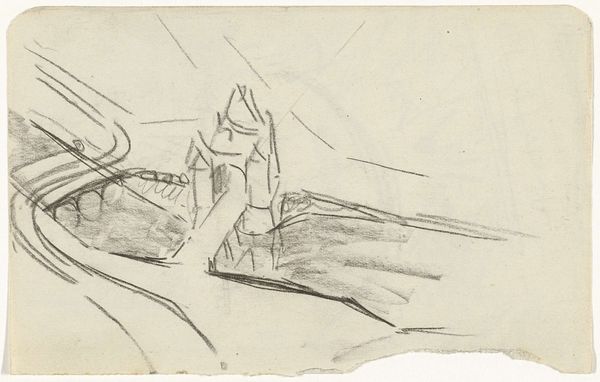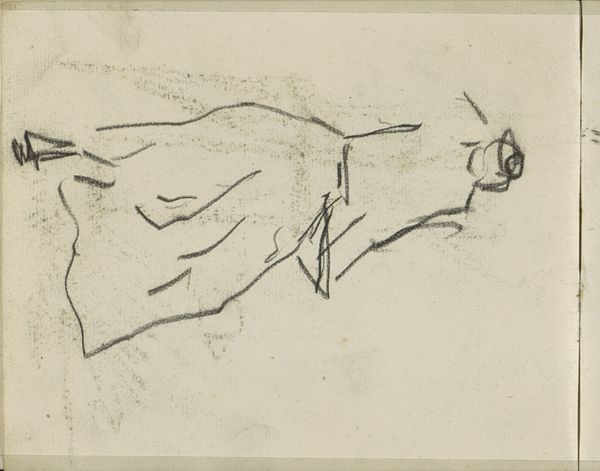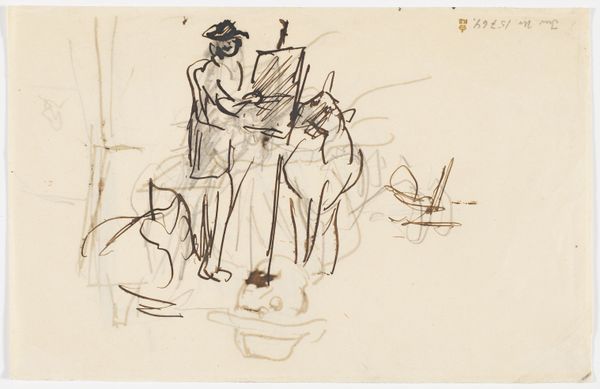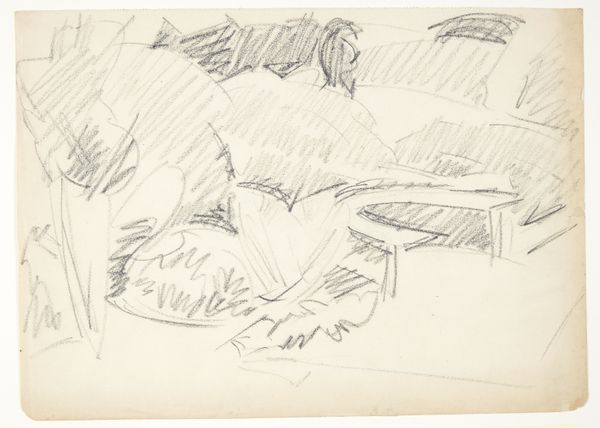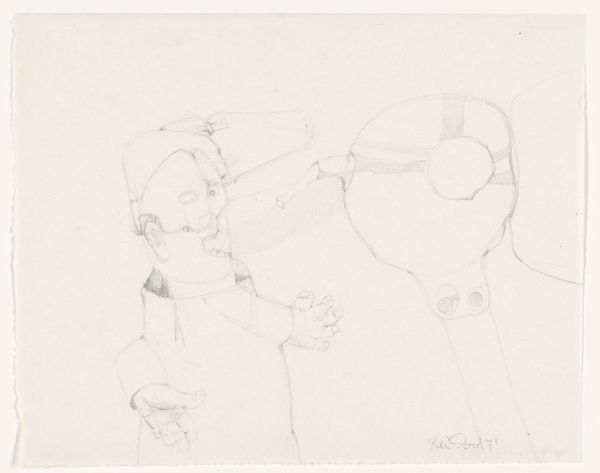
drawing, pencil, graphite
#
portrait
#
drawing
#
ink drawing
#
pen illustration
#
pen sketch
#
figuration
#
pencil
#
graphite
#
sketchbook drawing
Dimensions: 90 mm (height) x 129 mm (width) (bladmaal)
Curator: Here we have "Figurstudier til Langelinje-billedet," or "Figure Studies for the Langelinje Picture," dating from 1923-1927, by Edvard Weie. Editor: It’s all scribbles! A tangle of graphite on paper. What are we looking at, really? Just ghostly impressions of forms. Curator: These are preparatory studies. Weie was known for his vibrant paintings depicting Copenhagen life, and this drawing gives us a peek into his process. The Langelinje is a prominent waterfront promenade, and Weie worked on a larger painting of that name during those years. Editor: Right, so this is raw materiality, pure process. You see the artist wrestling with the figures, trying to capture a gesture, a stance. He’s mapping out forms, really constructing the human form in its most reduced state. The marks have energy, the graphite laid down on paper has a frenetic character. Curator: Consider the cultural context. Weie was part of the Danish modernist movement, influenced by artists like Matisse and the Expressionists. He was striving to capture the feeling of modern life, the dynamism of the city, the lives of the bourgeois, here the process gives more insight to his influences than a completed piece would Editor: And think about the economics of art making. Drawing like this is where it starts - the paper, the graphite; relatively cheap means by which the art and, perhaps more practically the living of the artist begins! He's thinking through the bodies that populate this public space; but the value judgment would normally elevate the finished painting and minimize this sketch. Why? Curator: Good question. Perhaps the finished painting embodies a clearer message to its contemporaneous audience or today's art institutions. These preliminary studies however are of great help to academics, who get access to understanding the artist and to develop knowledge in a critical context. Editor: I find the imperfections here compelling. This sketch feels far more "real" than the finished product ever could. Here the material handling IS the artwork, even more so than the planned painting itself. Curator: In its immediacy, the drawing captures a unique, honest expression of Weie’s artistic exploration, offering insights beyond the final painting. Editor: Yes! It reminds me that even a seemingly fleeting sketch contains layers of artistic labor and intent, ones typically hidden from our gaze in museums.
Comments
No comments
Be the first to comment and join the conversation on the ultimate creative platform.
